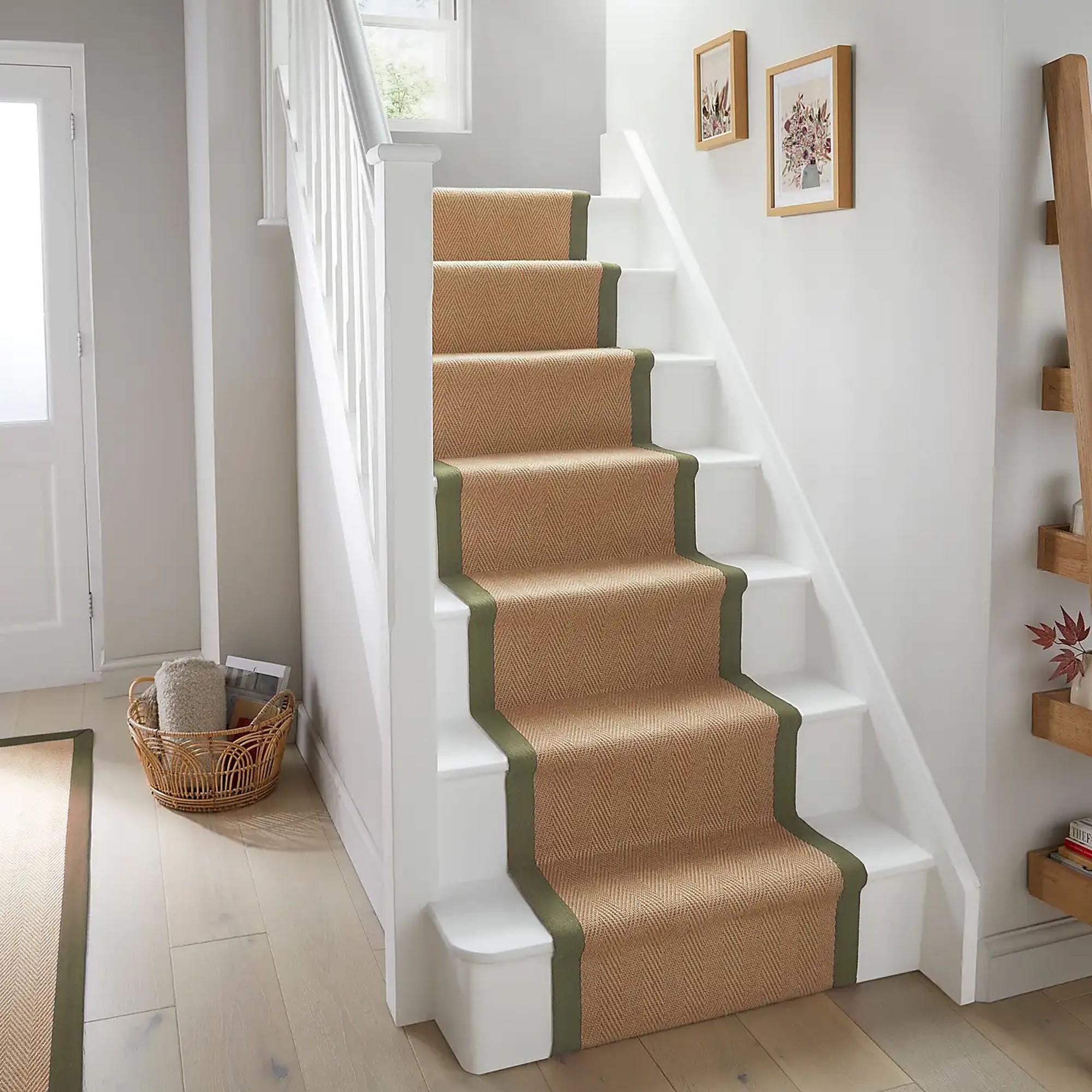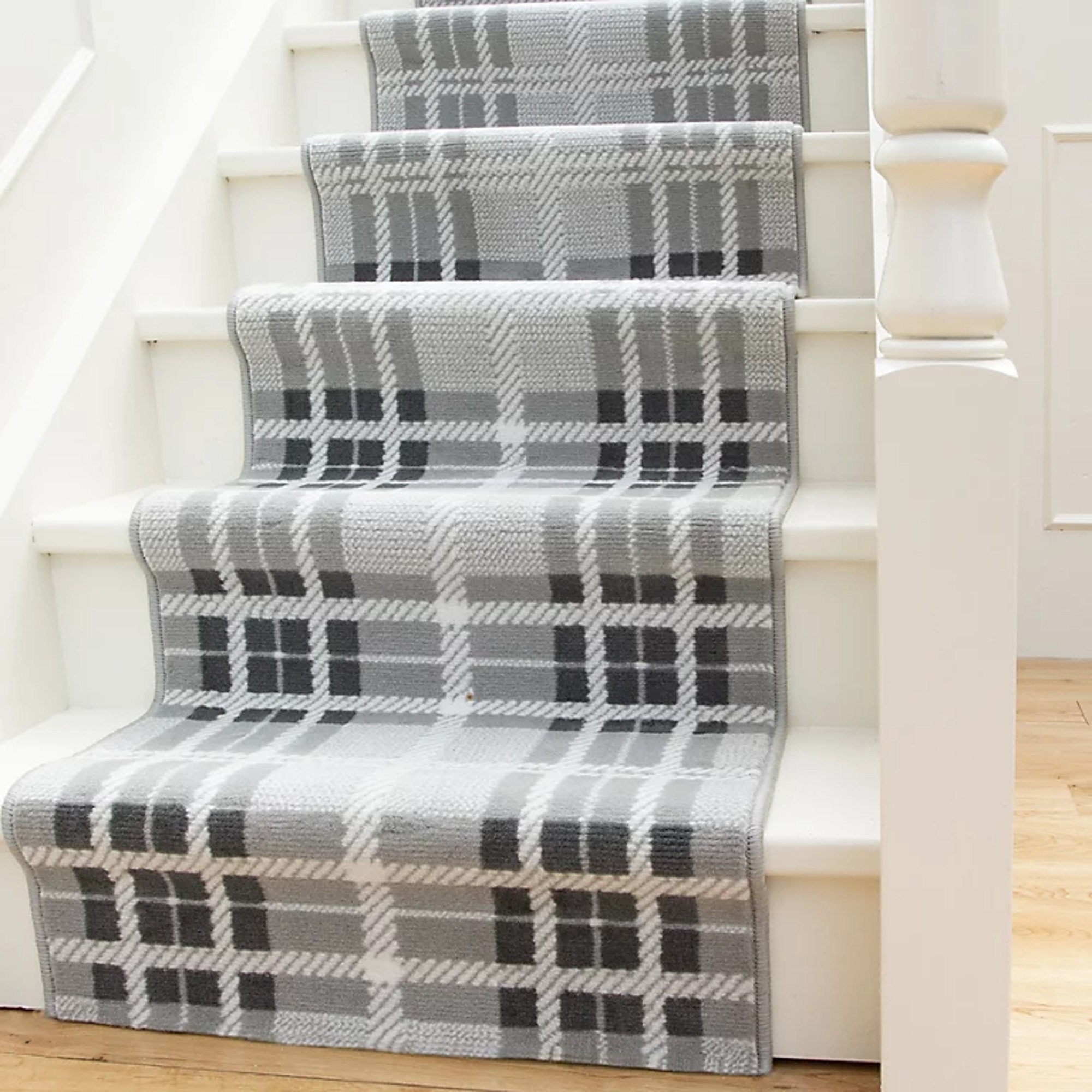How to measure for a stair runner – experts reveal the golden rule for getting your measurements just right
A guide to the best and easiest method to measure for your stair runner, according to flooring experts


If you’re on the market for a stair runner, you’ve probably encountered the issue of not being quite sure how to best measure for your stair runner to get the most accurate results with the least amount of effort.
Installing a stair runner is a great staircase idea if you’re looking for ways to make your stairway look and feel cosier and more stylish. Not to mention all the practical benefits stair runners provide.
‘Runners can offer more traction and stability, making for fewer slips and accidents, as well as contributing to noise reduction on bare stairs, and bringing a touch of aesthetic elegance to a stairway,’ says Daniel Prendergast, director at The Rug Seller.
But as far as measuring for your stair runner ideas goes, our flooring experts share their fail-proof, step-by-step guide that’s easy to understand and follow. But just to avoid any errors, Daniel’s first top tip is to ‘measure twice and order once’.
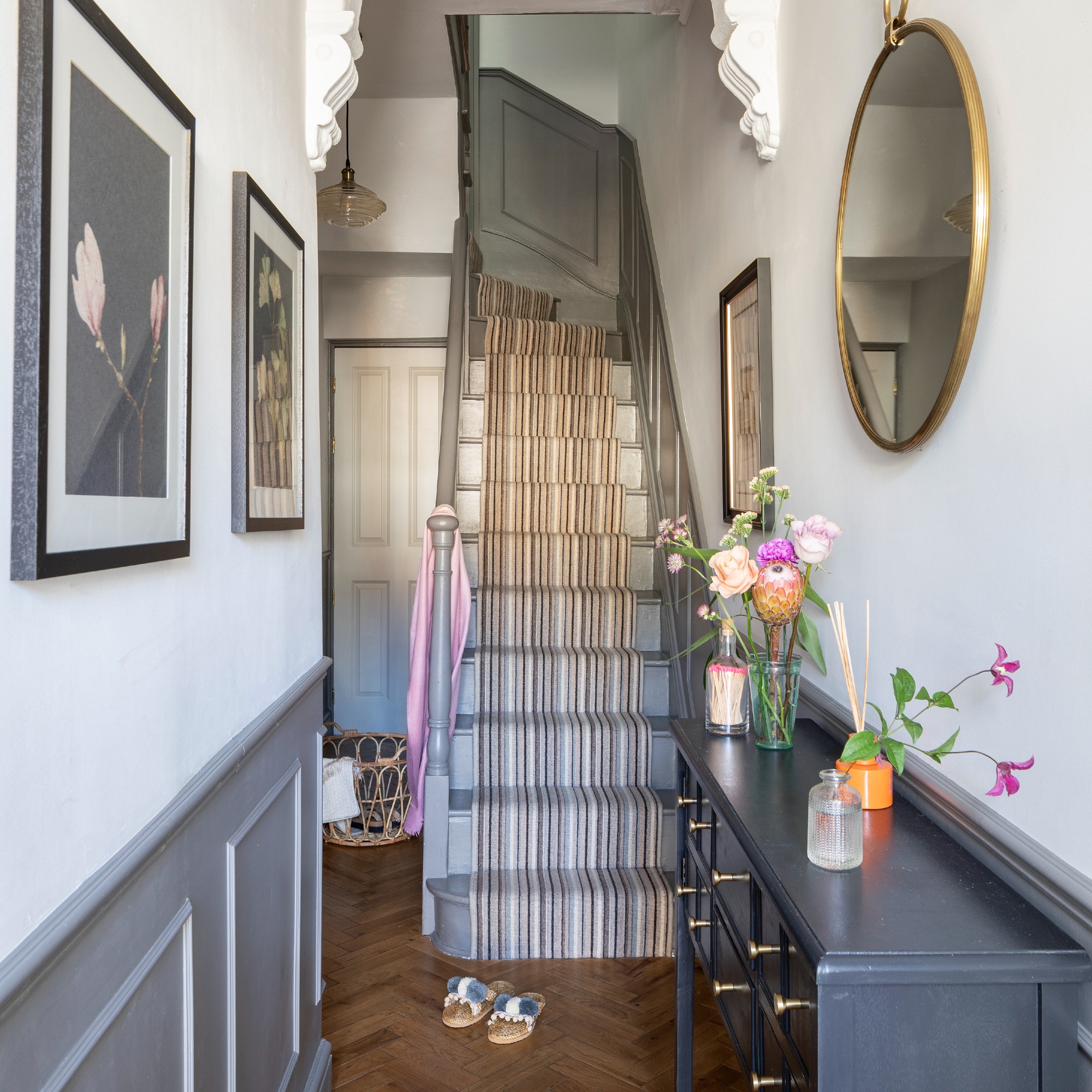
How to measure the ideal length of your stair runner?
As far as hallway flooring ideas go, stair runners are up there for us. And while measuring for one can seem like a daunting task, there’s in fact quite an easy formula that will take the guesswork out of it. And all you need is a flexible tape measure like this Stanley one at Amazon – it’s better than a regular tape measure as some staircases can be curved and irregularly shaped.
‘When measuring the length of stair runners, accuracy is key for securing a perfect fit,’ starts Liam Cleverdon, flooring trends expert at Flooring King, going back to Daniel’s ‘measure twice and order once’ advice.
Liam continues, ‘To do this, you’ll need two key measurements – the size of the depth and height of a step. Then, taking these figures, add them together and multiply them by the number of steps in the home. This will give you the total length of the stair runners. It’s always best to add a few extra inches, accounting for any overhang or adjustments.’
Daniel at The Rug Seller adds, ‘If there’s a landing area between stairs, measure that length separately and add it to your total. And if your steps have an overhang or bullnose, make sure that you’ve also included that in your calculations.’

How to choose stair runner width?
While the length of your stair runner needs to be very precise in order for it to work with your staircase, its width is not so much set in stone as there are a few variables and things to consider which will differ from one home to another.
‘When choosing the width for a stair runner, think about both the width of the stairs and the desired aesthetic. A runner that covers more width on a narrow staircase, for example, can help make the stairs feel wider. For a wider staircase, leaving more space on the sides can result in a more elegant appearance. The runner should essentially complement the overall decor and functionality of your staircase,’ Daniel explains.
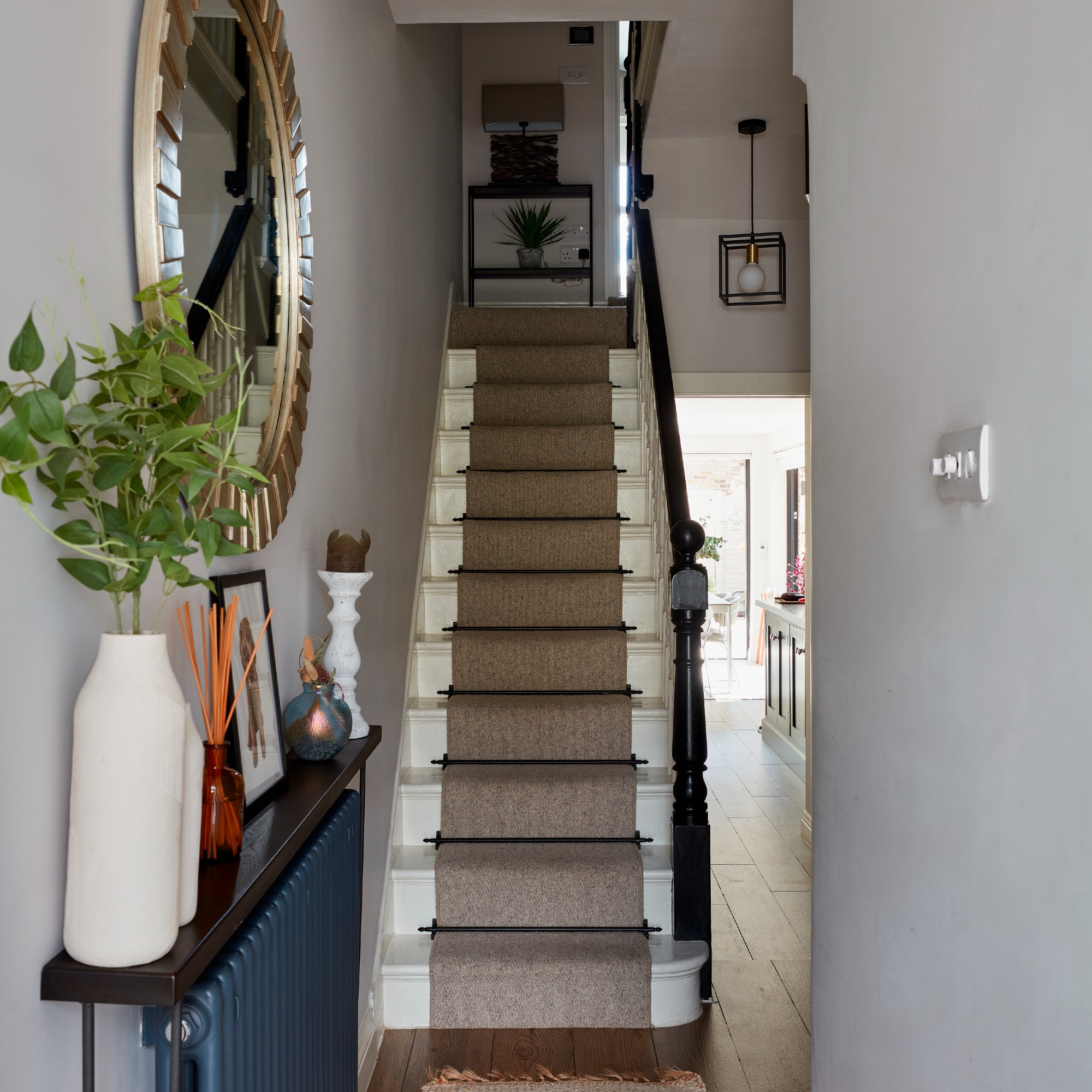
How much space should be on each side of a stair runner?
And yes, while the perfect width of a stair runner is more subjective than its length, there still is a golden rule that experts largely follow. This stairway carpet idea creates a balanced look so it’s one to know about.
‘It’s usual to leave about 10 centimetres on either side of the runner for balance and visual contrast, but this comes down to personal preference, the width of the staircase, and the flooring underneath. If you have a polished wood floor, for example, you might want to leave a bigger gap to show it off,’ Daniel says before adding. ‘Deduct the desired width of your runner from the width of your stairs and divide it by two to give you the exact gap you’ll need to leave on either side.’
Our stair runner top picks
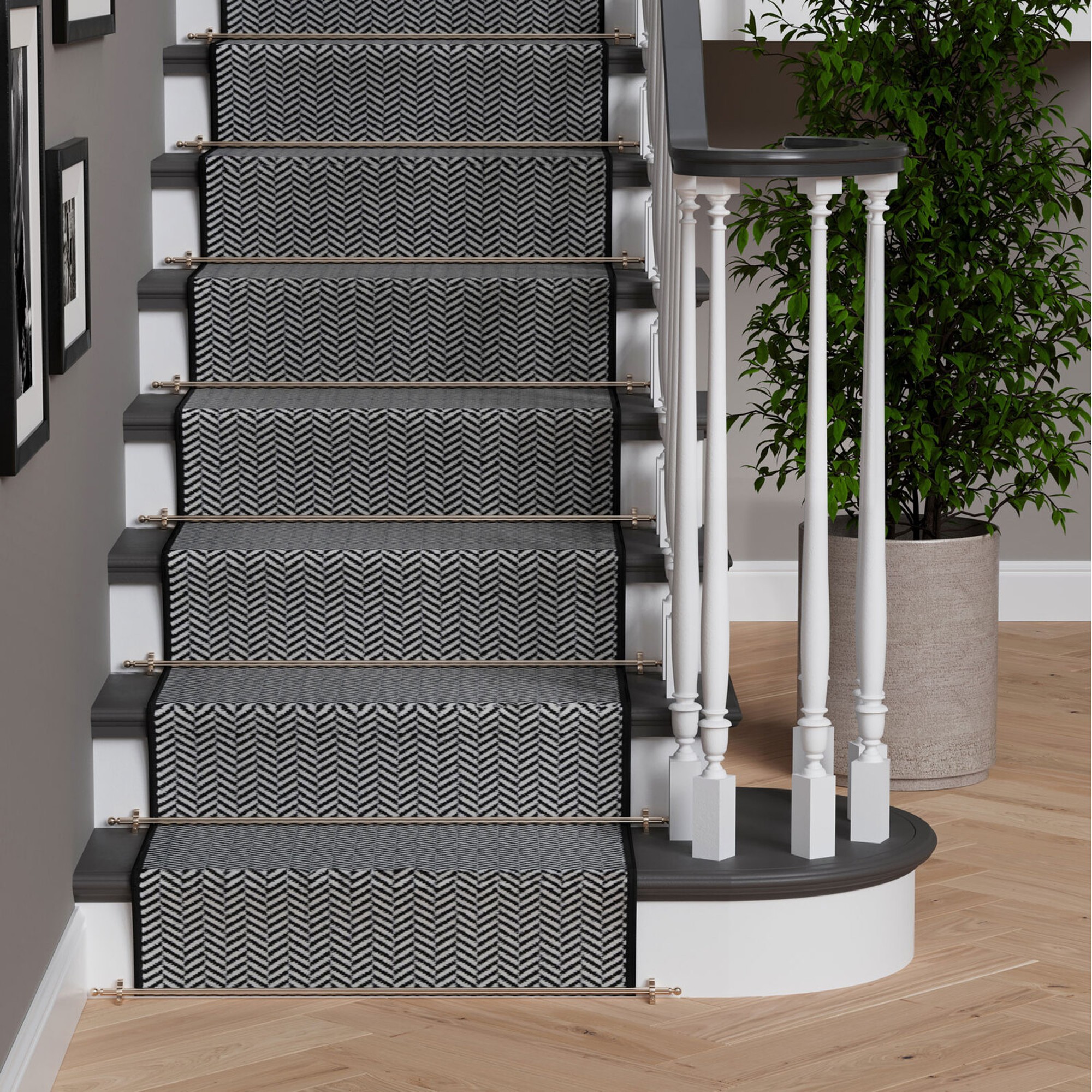
Herringbone is a sophisticated motif that is sure to elevate your staircase with the help of this monochrome stair runner from The Range. And while we're not usually fans of synthetic materials, they are the perfect hardwearing option for a high-traffic area like the staircase.
So now that you know how to measure for your chosen stair runner, there’s nothing stopping you from making your staircase stylish and chic.
Get the Ideal Home Newsletter
Sign up to our newsletter for style and decor inspiration, house makeovers, project advice and more.

Sara Hesikova has been a Content Editor at Ideal Home since June 2024, starting at the title as a News Writer in July 2023. She is now also the Ideal Home Certified Expert in Training on Furniture, and so far has tested 80 different sofas.
Graduating from London College of Fashion with a bachelor’s degree in fashion journalism in 2016, she got her start in niche fashion and lifestyle magazines like Glass and Alvar as a writer and editor before making the leap into interiors, working with the likes of 91 Magazine and copywriting for luxury bed linen brand Yves Delorme among others.
-
 Move over, fences – dead hedges are the wild and wonderful alternative your garden will love and they're easier to build than you'd think
Move over, fences – dead hedges are the wild and wonderful alternative your garden will love and they're easier to build than you'd thinkThe perfect eco-friendly solution for small gardens
By Kayleigh Dray
-
 Did you know John Lewis can make your old curtains or rugs look like new? Their repair service is now available in all stores
Did you know John Lewis can make your old curtains or rugs look like new? Their repair service is now available in all storesJohn Lewis has added another string to its bow, and it's great news for your old homeware
By Kezia Reynolds
-
 This beautiful mixing bowl is the unexpected star of so many kitchens – including Mary Berry's and the Bake Off tent
This beautiful mixing bowl is the unexpected star of so many kitchens – including Mary Berry's and the Bake Off tentThis earthenware bowl proves that you don't have to spend a huge amount for a classic kitchen addition
By Molly Cleary
-
 This beautiful mixing bowl is the unexpected star of so many kitchens – including Mary Berry's and the Bake Off tent
This beautiful mixing bowl is the unexpected star of so many kitchens – including Mary Berry's and the Bake Off tentThis earthenware bowl proves that you don't have to spend a huge amount for a classic kitchen addition
By Molly Cleary
-
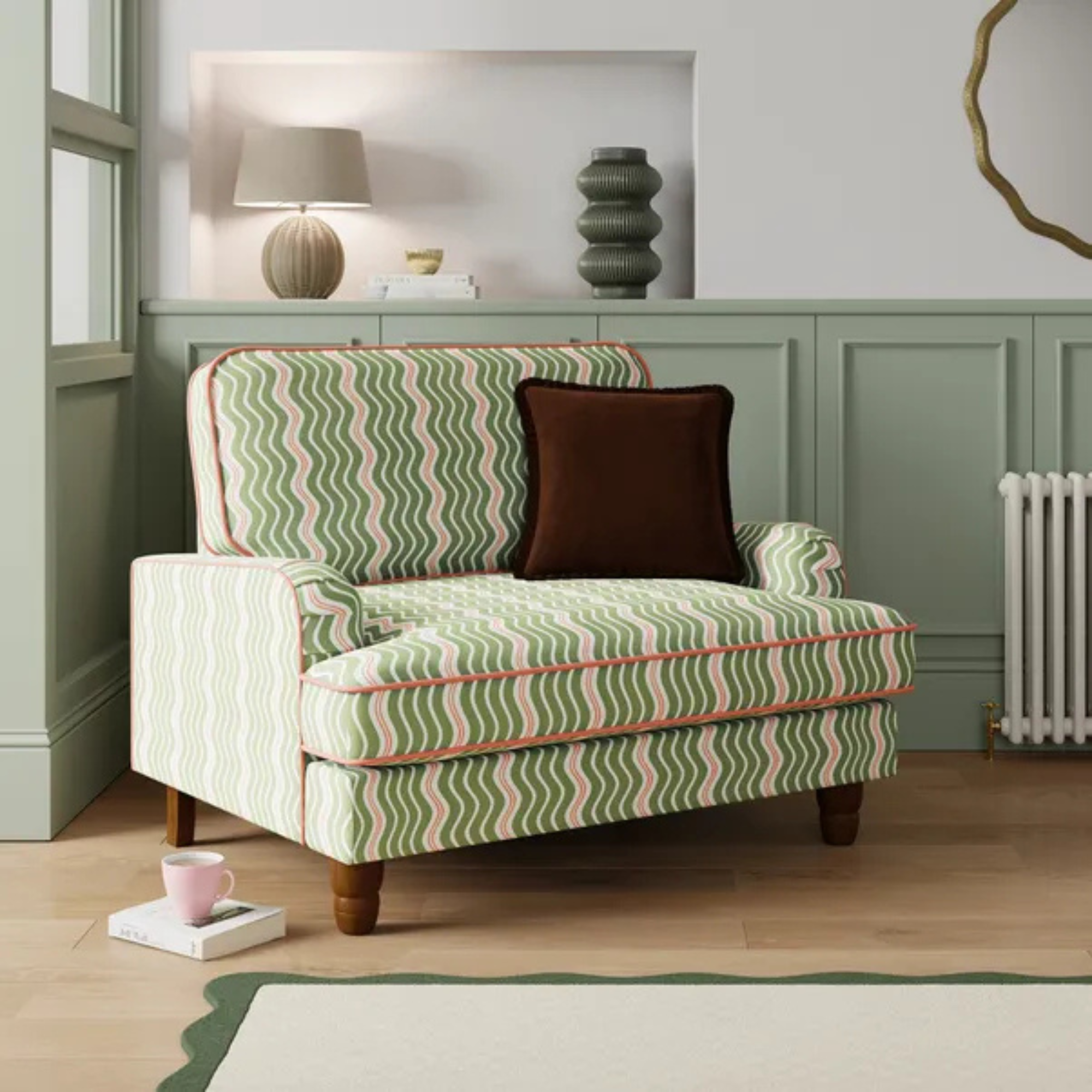 Dunelm has given its cult snuggle chair a new look - it's swapped classic stripes for another emerging pattern trend
Dunelm has given its cult snuggle chair a new look - it's swapped classic stripes for another emerging pattern trendI'm obsessed with this fresh new style
By Kezia Reynolds
-
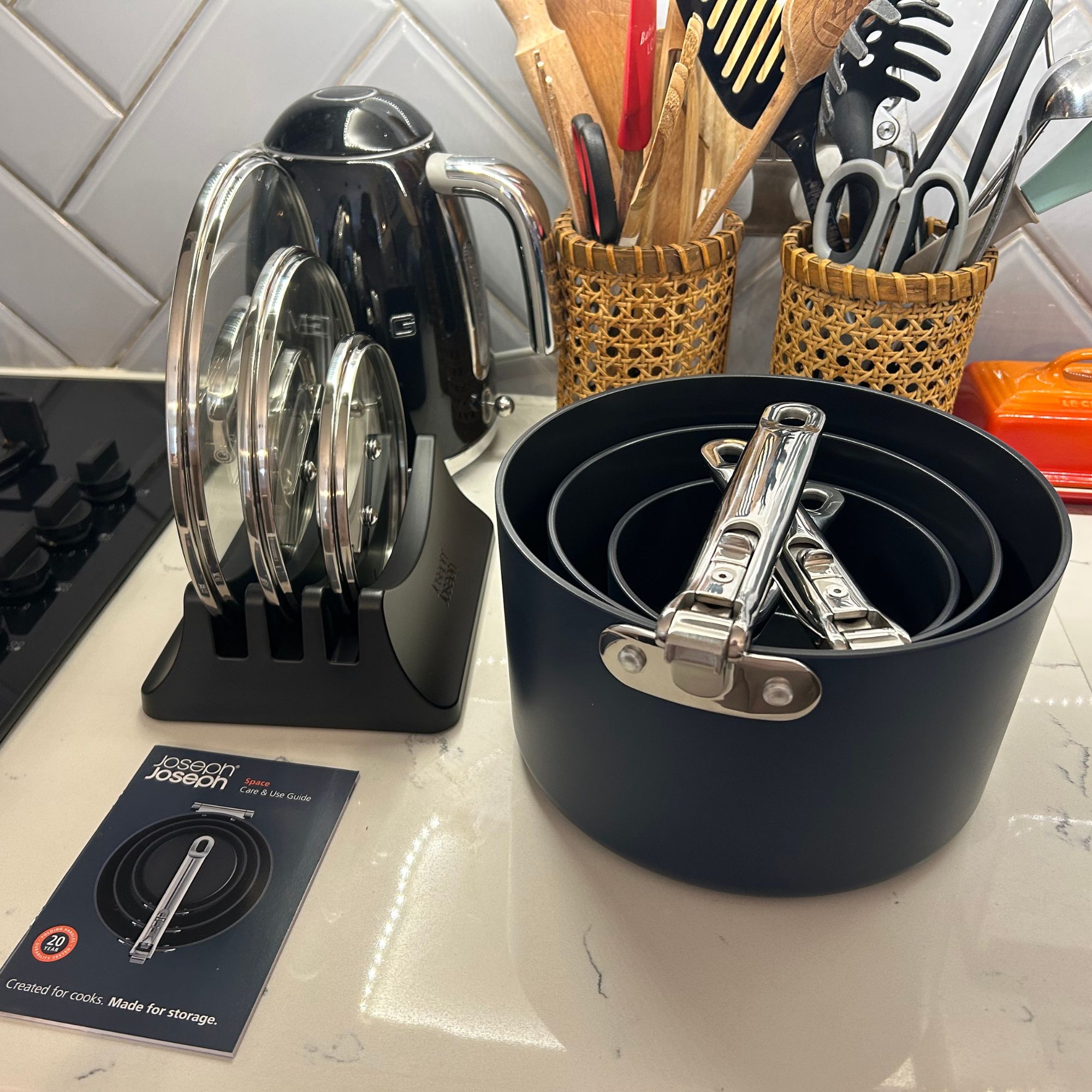 I tried Joseph Joseph's pan set with foldable handles – the space-saving design is just one of the many highlights
I tried Joseph Joseph's pan set with foldable handles – the space-saving design is just one of the many highlightsSmall kitchen? I tested this innovative Joseph Joseph space-savvy set which has foldable handles — and I loved it
By Annie Collyer
-
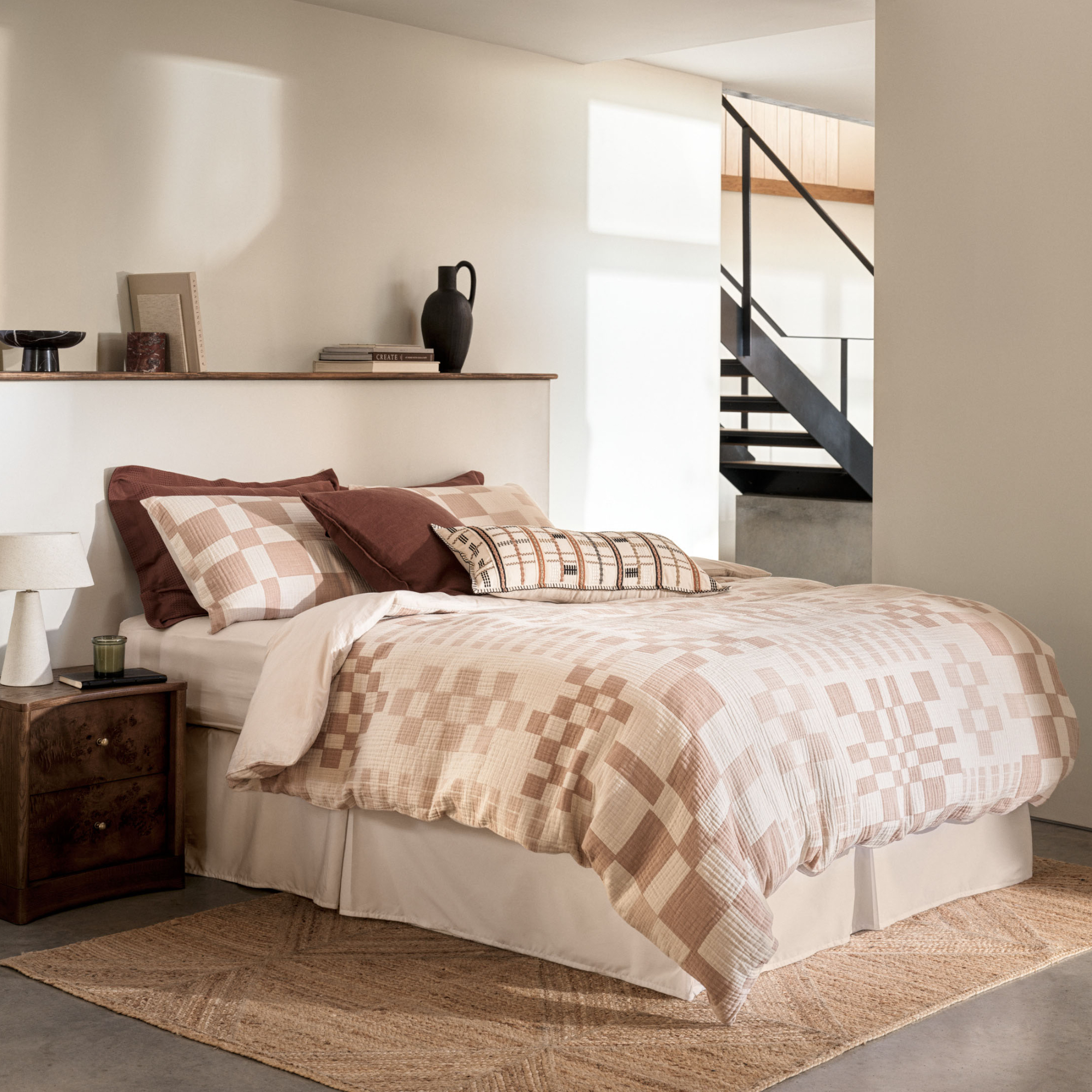 As a stylist, I spend hours looking for bedding for photoshoots, and I just spotted these 6 expensive-looking sets at M&S
As a stylist, I spend hours looking for bedding for photoshoots, and I just spotted these 6 expensive-looking sets at M&SGet a little luxury at a high-street price
By Laurie Davidson
-
 I've been waiting to try out the Ninja Slushi for months – this is what happened the first time I tried it
I've been waiting to try out the Ninja Slushi for months – this is what happened the first time I tried itThe Ninja Slushi is the stuff of dreams for summer entertaining
By Molly Cleary
-
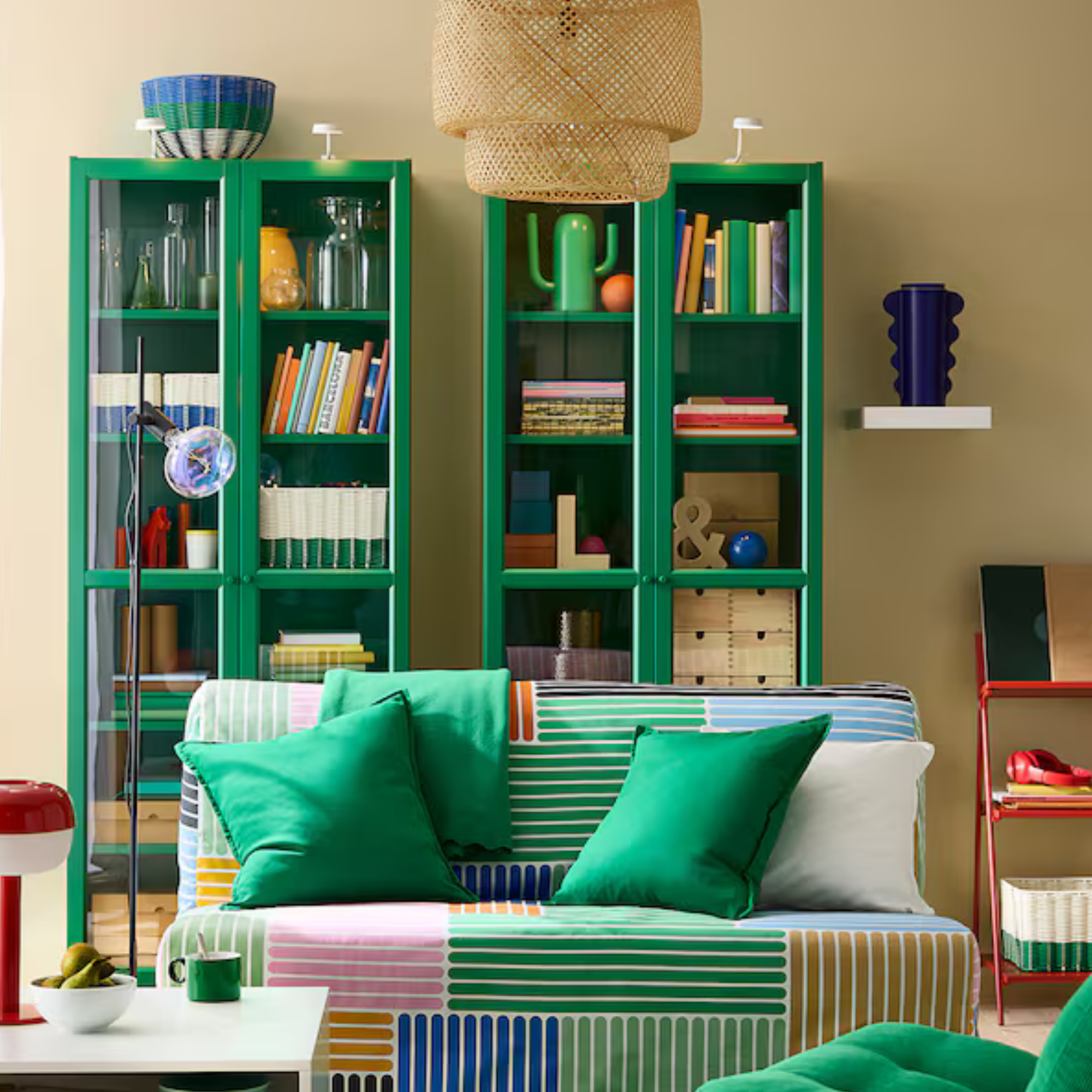 IKEA has drenched its BILLY bookcase in this year’s ‘it’ colour - but you’ll have to act fast if you want to get your hands on one
IKEA has drenched its BILLY bookcase in this year’s ‘it’ colour - but you’ll have to act fast if you want to get your hands on oneI'm obsessed with this gorgeous limited-edition colourway
By Kezia Reynolds
-
 My go-to Ninja coffee machine just had a major price drop. It's more affordable than I've seen it before
My go-to Ninja coffee machine just had a major price drop. It's more affordable than I've seen it beforeIt makes coffee shop quality achievable at home
By Molly Cleary
-
 I'm a kitchen decor editor and didn't like this tableware trend - until I saw H&M Home's designer-look plates
I'm a kitchen decor editor and didn't like this tableware trend - until I saw H&M Home's designer-look platesThey made it easy to justify a new crockery set
By Holly Cockburn
